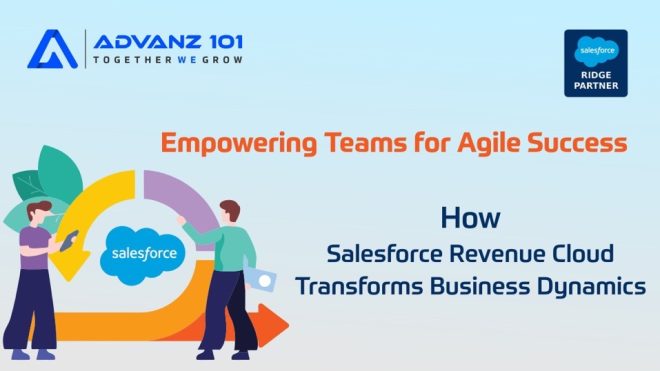We are in post-pandemic 2024 and businesses across industries are climbing the shaky market ladder while navigating a plethora of enterprise challenges. In this scenario, Salesforce with its multi-hyphenate products from artificial intelligence to partner apps & experts has empowered firms and organizations’ sales, service, marketing, IT and commerce teams to work as one from anywhere – so that they can serve and make their customers happy everywhere.
Businesses can have streamlined growth with agile and efficient operations only when they unify sales, finance, and legal aspects on one platform for an optimized revenue lifecycle management. With the introduction of Revenue Cloud in 2020, Salesforce ensured that businesses can take control of revenue growth across any channel. It gave the businesses agility to bring together CPQ and Billing, Partner Relationship Management, and B2B Commerce functionalities through a singular platform.
Additionally, Revenue Cloud being a part of the Salesforce Customer 360 Platform enables businesses to link their partner, operations, finance, and sales teams, resulting in the creation of a single source of truth for all revenue-related transactions, from acquisition to renewal to revenue recognition.
This is how Revenue Cloud transforms business dynamics:
360° Turn around for the buying experience
Eases the customers’ ability to sift among different sales channels with direct sales, partners, and e-store fronts. The Revenue Cloud allows sales representatives to have a complete view of the customer’s existing product history and online interactions on a few clicks for a smooth buying experience. The new CPQ-B2B Commerce connector allows businesses to customize digital storefronts for complex B2B selling and enables the addition of customizable and configurable pricing to digital carts for a self-service experience.
Jumpstart new revenue streams
Teams in charge of revenue operations can swiftly establish new revenue streams like launching a subscription product or in the form of an implementation of consumption pricing. Salesforce’s recent acquisition of Vlocity has yielded new technology that offers industry-specific solutions for certain revenue-related activities, managing ad inventory or content syndications for media organizations and businesses.
Salesforce organizations can now generate income streams from different clouds on a single platform with the new Multi-Cloud Billing feature. For example, field service representatives can now upsell products and onsite services with invoicing and payments managed on a single, unified system. Additionally, companies can now launch a subscription offering from start to finish in eight weeks as opposed to months using Revenue Cloud Quick Starts.
Improve revenue efficiency by leaps
Process automation brings down the workload of teams who are burdened with manual approvals, data reconciliation and transcriptions of orders from one system to another. Issues like underbilling for services or improperly recording contract modifications are avoided by automatically evaluating sales orders and consolidating invoices; these errors often take place during manual processing of contracts and can often lead to loss of revenue in a sales cycle.
The new Customer Asset Lifecycle Management tool eliminates the need to manually download out-of-date order forms by providing a clear, visual dashboard of all the products a customer has purchased. It also tracks contract amendments over time and open balances to give a more comprehensive understanding of the customer relationship.
Teams in Salesforce organizations are now better equipped to align and make strategic decisions about where to focus their efforts by using real-time tracking for important KPIs like customer lifetime value, net revenue retention, and monthly recurring revenue, ensuring a successful agile enterprise.
For more information on adapting Salesforce Revenue Cloud for your business, please feel free to drop a line on info@advanz101.com


